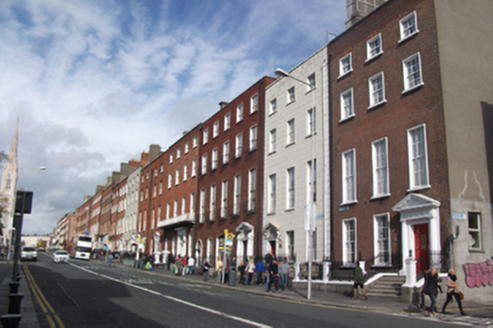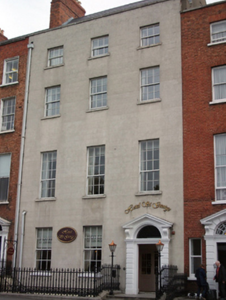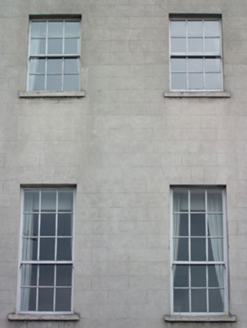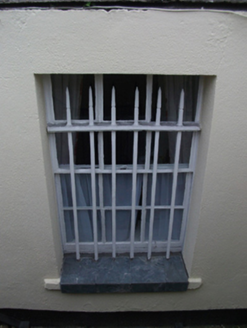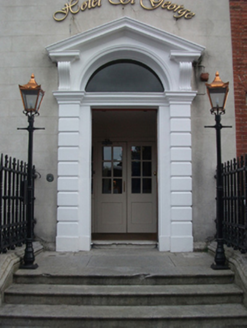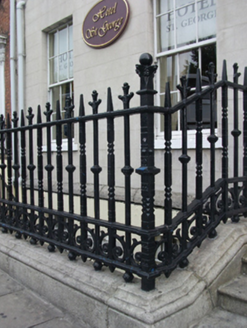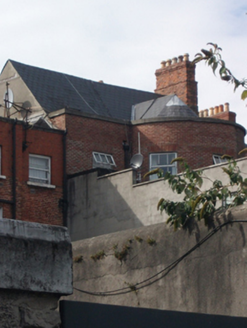Survey Data
Reg No
50011015
Rating
Regional
Categories of Special Interest
Architectural, Artistic
Original Use
House
In Use As
Hotel
Date
1750 - 1760
Coordinates
315750, 235114
Date Recorded
26/09/2011
Date Updated
--/--/--
Description
Terraced three-bay four-storey house over exposed basement, built c.1755, with full-height bow and later extensions to rear elevation. Now in use as hotel. Pitched slate roof behind parapet wall with squared granite coping. Rendered and red brick chimneystacks with clay pots to party walls, shared with adjoining houses. Hipped slate roof to apse behind red brick parapet with squared granite coping. Replacement uPVC rainwater goods throughout. Rendered ruled-and-lined walls with granite plinth course over rendered walls to basement. Header bond red brick walls to rear elevation. Flat-arched window openings with rendered reveals and granite sills. Six-over-six pane timber sliding sash window and vertical timber sliding sash window to basement. Historic replacement timber sliding sash windows elsewhere, six-over-six pane to ground and second floors, nine-over-six pane to first storey and three-over-three pane to top floor. Round-headed door opening to painted stone doorcase comprising glazed and timber panelled door with stone reveals flanked by rusticated pilasters on plinth blocks supporting fluted corbel brackets with open-bed pediment above housing replacement plain fanlight, set within rusticated surrounds. Door opens onto granite-flagged platform with two cast-iron lamp posts and two nosed granite steps to approach bridging basement area. Approach flanked by nineteenth-century wrought-iron railings on replacement granite plinth, with wrought-iron gate accessing Victorian tiled basement via recent steel staircase with cast-iron handrail. Interior subdivided into hotel rooms. Entrance hall having simple Rococo ceiling with guttae cornice. Rococo surrounds to archway housing stained-glass fanlight. Ground floor front room having gilded floral decoration to ceiling, simple egg-and-dart cornice and Rococo wall panels. Rear room having bow to rear and original heavy chair rail, skirting and panelled wainscoting in addition to egg-and-dart and dentillated cornice. Stair hall having staircase with ramped handrail and simple guttae and foliate cornice.
Appraisal
Located on historic Parnell Square this pleasantly proportioned townhouse forms an integral component of an important Dublin streetscape. The site was leased in 1753 by Laughlin Daly, a barrister who built the house. The house was later altered by E.H. Carson in 1874. The historic character of the house has been largely maintained through the retention of various historic features including sash windows and a pleasant doorcase. The building also retains quality Rococo interiors with the addition of interesting colourful details c.1874. The retention of timber sash windows enhances the exterior, and the street setting is complimented by the cast-iron railings and the steps and plinth. Parnell Square was the product of Dr Bartholomew Mosse; in 1748 he leased four acres at the junction of the three important sites; the Gardiner Estate, Sackville (now O’Connell) and Great Britain (now Parnell) Streets. There the New Gardens (now the Garden of Remembrance) were constructed, a landscaped tract of land with illuminated paths, obelisks and a loggia.
